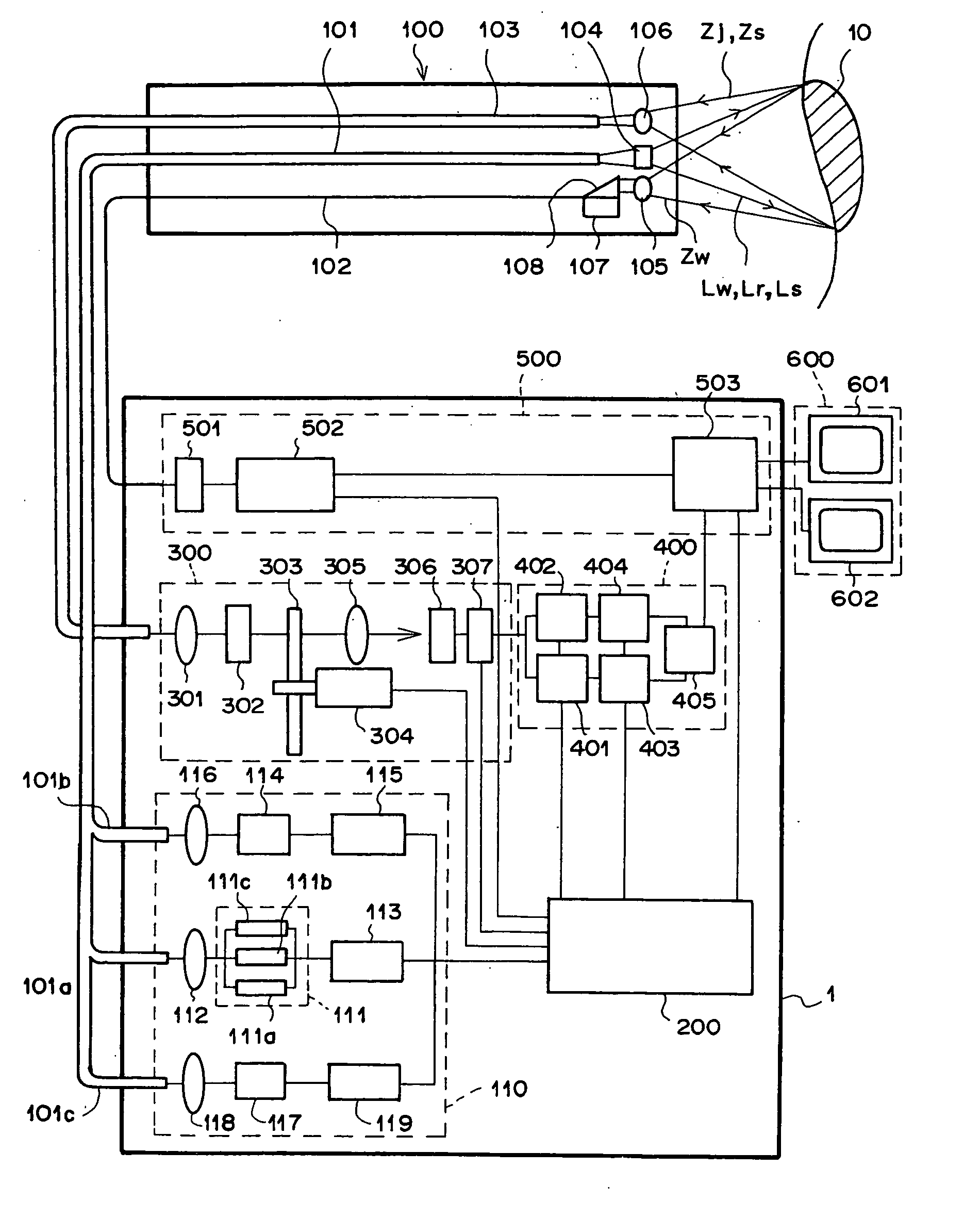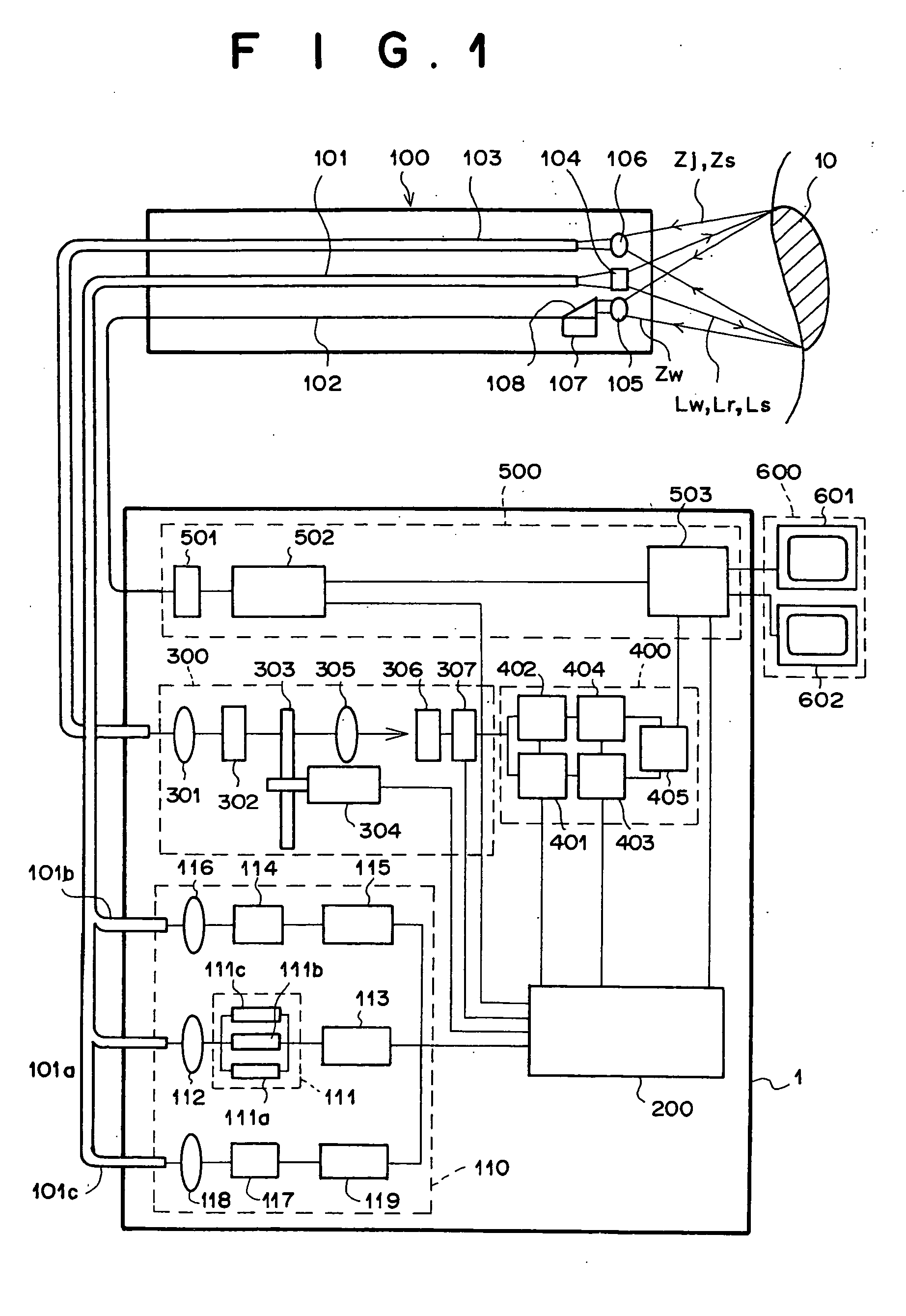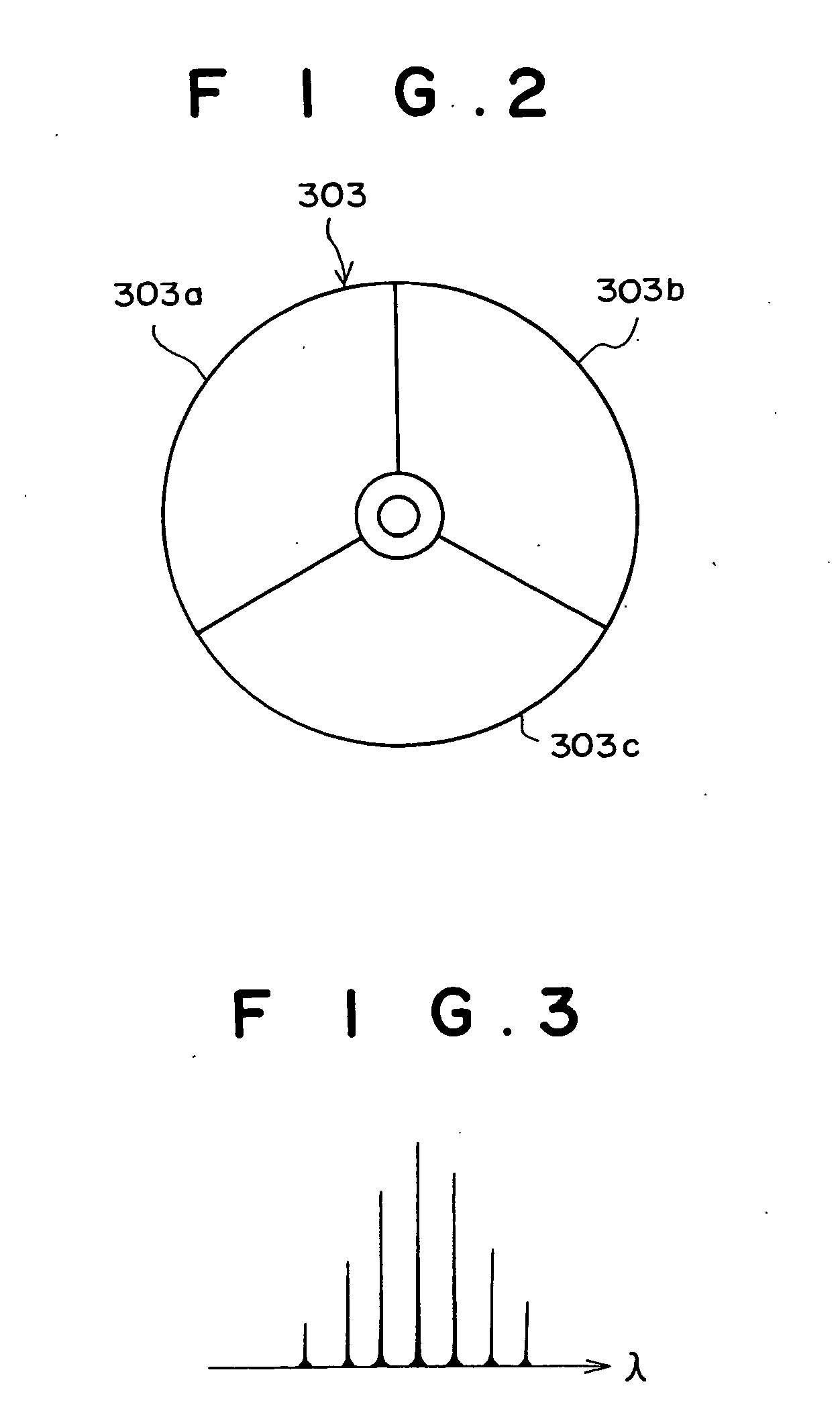Endoscope system having multiaxial-mode laser-light source or substantially producing multiaxial-mode laser light from single-axial-mode laser light
a laser light source and endoscope technology, applied in the field of endoscope systems, can solve problems such as uneven normal image, and achieve the effect of suppressing uneven diagnostic imag
- Summary
- Abstract
- Description
- Claims
- Application Information
AI Technical Summary
Benefits of technology
Problems solved by technology
Method used
Image
Examples
first embodiment
Operation of First Embodiment
[0073] The operations of the fluorescence endoscope system as the first embodiment of the present invention are explained below for the case where a synthesized image is displayed by using digitized data of autofluorescence images in two different wavelength bands and a reflection image.
[0074] First, in order to obtain the autofluorescence images in the two different wavelength bands, the computer 200 activates the power supply 115 by sending a control signal to the power supply 115. Then, the GaN semiconductor laser element 114 emits multiaxial-mode excitation light Lr having a center wavelength of 410 nm. The excitation light Lr is collected by the condenser lens 116, and enters the excitation-light guide 101b. The excitation light Lr is guided through the excitation-light guide 101b to the front end of the endoscope insertion unit 100, and is then applied to the living tissue 10 through the illumination lens 104.
[0075] When the living tissue 10 is i...
second embodiment
[0085] The second embodiment of the present invention is explained below. FIG. 4 is a diagram illustrating an outline of a construction of the fluorescence endoscope system as the second embodiment of the present invention. In FIG. 4, elements having the same reference numbers as FIG. 1 have the same functions as the corresponding elements in FIG. 1, and explanations of the functions of the common elements are not repeated below. The fluorescence endoscope system of FIG. 4 realizes the functions of both the second and sixth aspects of the present invention. The fluorescence endoscope system of FIG. 4 is different from the fluorescence endoscope system of FIG. 1 in the light sources of the white light Lw and the excitation light Lr. That is, the fluorescence endoscope system of FIG. 4 comprises an illumination unit 120 instead of the illumination unit 110.
[0086] The illumination unit 120 comprises a white-light source 128 instead of the white-light source 111, and an excitation-ligh...
third embodiment
[0091] The third embodiment of the present invention is explained below. FIG. 6 is a diagram illustrating an outline of a construction of the fluorescence endoscope system as the third embodiment of the present invention. In FIG. 6, elements having the same reference numbers as FIG. 1 have the same functions as the corresponding elements in FIG. 1, and explanations of the functions of the common elements are not repeated below. The fluorescence endoscope system of FIG. 6 realizes the functions of both the third and seventh aspects of the present invention.
[0092] The fluorescence endoscope system of FIG. 6 is different from the fluorescence endoscope system of FIG. 1 in that a vibrator (or shaker) 135 is attached to the white-light guide 111a, a vibrator (or shaker) 132 is attached to the excitation-light guide 101b, and controllers 136 and 133 for the vibrators 135 and 132 are provided. In addition, the fluorescence endoscope system of FIG. 6 comprises a white-light source 131 inst...
PUM
 Login to View More
Login to View More Abstract
Description
Claims
Application Information
 Login to View More
Login to View More - R&D
- Intellectual Property
- Life Sciences
- Materials
- Tech Scout
- Unparalleled Data Quality
- Higher Quality Content
- 60% Fewer Hallucinations
Browse by: Latest US Patents, China's latest patents, Technical Efficacy Thesaurus, Application Domain, Technology Topic, Popular Technical Reports.
© 2025 PatSnap. All rights reserved.Legal|Privacy policy|Modern Slavery Act Transparency Statement|Sitemap|About US| Contact US: help@patsnap.com



